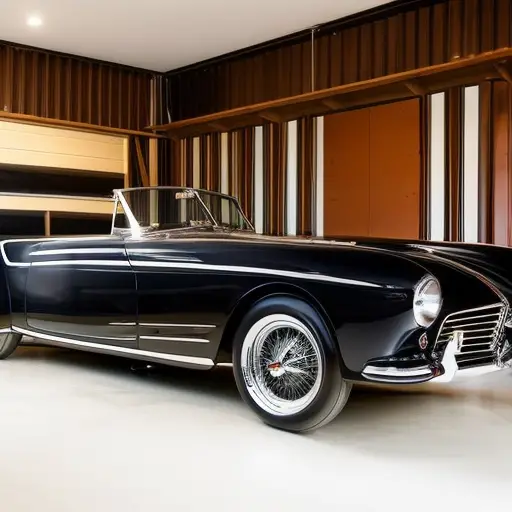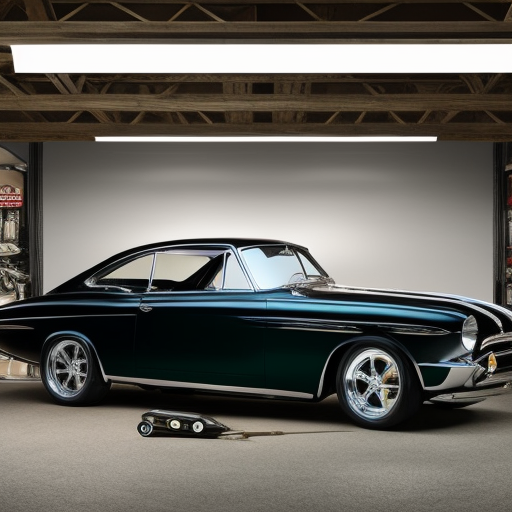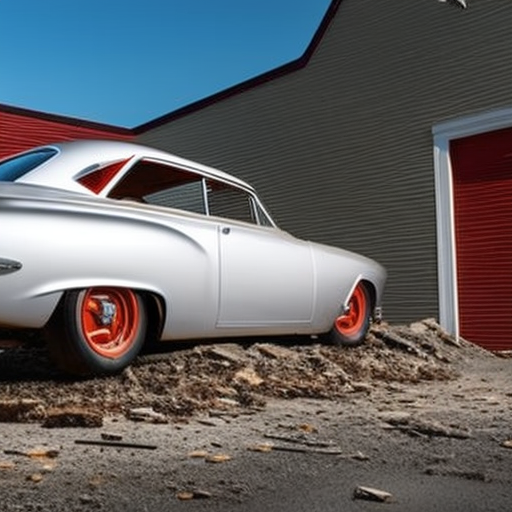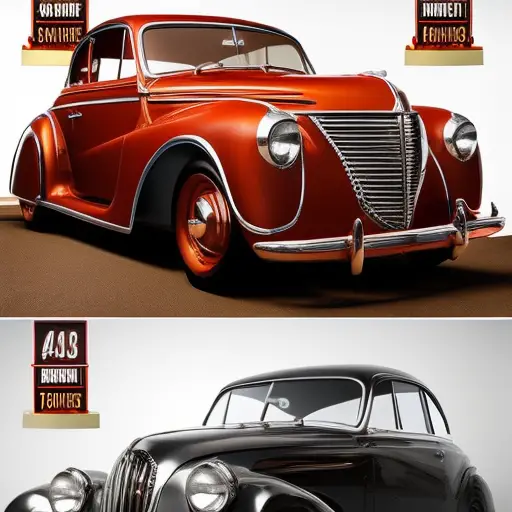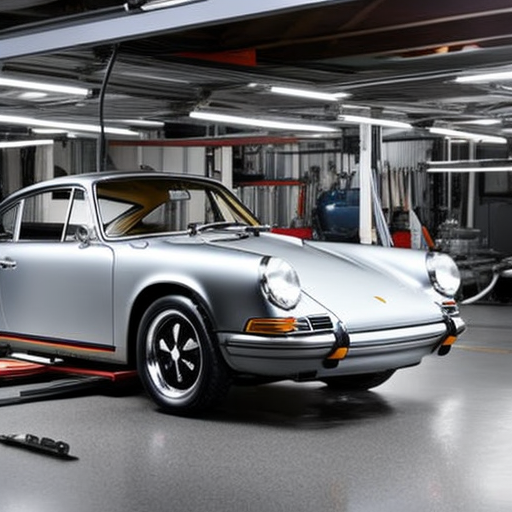Preserving the Heritage Through Car Restoration

In an era of rapid innovation and technological advancement, the art of preserving automotive heritage through meticulous car restoration stands as a testament to the enduring legacy of classic automobiles.
As enthusiasts and experts alike delve into the history, techniques, and challenges of restoration, the impact of their efforts on preserving the rich heritage of vintage cars becomes increasingly apparent.
Join us as we explore the profound significance of authentic restoration in safeguarding the timeless allure of classic automobiles.
The History of Classic Cars
The history of classic cars dates back to the early 20th century when automobile manufacturers first began producing vehicles with timeless designs and enduring appeal. Classic car evolution is marked by iconic car models that have become emblematic of their respective eras. From the Ford Model T, which revolutionized transportation, to the elegant curves of the 1961 Jaguar E-Type, classic cars have captured the imagination of automotive enthusiasts worldwide.
The evolution of classic cars is a testament to the innovative spirit of automotive engineering. Each decade brought forth new advancements in technology and design, giving rise to iconic car models that continue to captivate collectors and historians. The 1950s saw the birth of the Chevrolet Bel Air, a symbol of American automotive prowess, while the 1970s introduced the sleek and powerful Porsche 911.
These iconic car models not only represent technological milestones but also embody the cultural and societal influences of their respective periods. Preserving the heritage of classic cars through restoration ensures that future generations can appreciate the rich history and craftsmanship that define these automotive marvels.
Techniques and Tools for Restoration
Classic car restoration requires a precise combination of traditional craftsmanship and modern techniques, as well as a specialized set of tools to ensure the preservation of historical and cultural significance. Rust removal is a critical aspect of the restoration process. Techniques such as sandblasting, chemical rust removers, and media blasting are commonly used to eliminate rust and corrosion from metal surfaces, ensuring the structural integrity of the vehicle. Paint stripping techniques, including chemical paint removers and abrasive blasting, are employed to reveal the original surfaces for accurate restoration.
Vintage car parts sourcing is a meticulous endeavor that involves locating authentic components to maintain the vehicle’s originality. This often requires extensive research, networking with specialized suppliers, and sometimes even fabrication of custom parts to ensure authenticity. Engine rebuilding tools, such as torque wrenches, micrometers, and cylinder honing tools, are indispensable for restoring the heart of the classic car to its former glory.
As restoration enthusiasts, it is crucial to employ these techniques and tools with utmost care and precision, as they play a vital role in preserving the historical and cultural significance of classic cars. Now, let’s delve into the importance of authenticity in restoration.
Importance of Authenticity in Restoration
Preserving the heritage of classic cars through restoration requires a meticulous commitment to authenticity in sourcing parts and employing restoration techniques. The importance of authenticity in restoration cannot be overstated.
The following points highlight why historical accuracy and original parts are crucial:
-
Preservation of Historical Integrity: Using original parts ensures that the car retains its historical integrity, allowing it to serve as a tangible link to the past.
-
Accurate Representation: Authentic restoration provides an accurate representation of the vehicle as it was originally designed and built, capturing the essence of a specific era.
-
Value Retention: Authenticity significantly impacts the value of a classic car, with original parts and historical accuracy being essential for maintaining or increasing its worth.
-
Cultural Significance: Preserving the authenticity of classic cars is a testament to the cultural and technological advancements of a bygone era, contributing to the broader tapestry of automotive history.
-
Legacy Preservation: Authentic restoration ensures that the legacy of classic cars is upheld, allowing future generations to appreciate and understand the significance of these vehicles in automotive evolution.
Transitioning to the subsequent section about ‘challenges faced in car restoration’, it is vital to acknowledge the intricacies involved in maintaining authenticity while overcoming restoration obstacles.
Challenges Faced in Car Restoration
While striving for historical authenticity in car restoration, restorers face various challenges that demand innovative solutions and careful attention to detail.
Rust removal poses a significant challenge in car restoration, especially for vintage vehicles that have been exposed to the elements for extended periods. Restorers must carefully assess the extent of rust damage and employ meticulous techniques to eradicate rust without compromising the original structure of the vehicle. This often requires a combination of chemical treatments, sandblasting, and painstaking manual labor to achieve a rust-free surface that can be primed and refinished.
Another formidable challenge in car restoration is engine rebuilding. Over time, engines can deteriorate, and their intricate components may suffer wear and tear. Restoring an engine to its former glory requires a deep understanding of the vehicle’s original specifications, as well as access to specialized tools and expertise. From cylinder re-boring to valve grinding, each step in the engine rebuilding process demands precision and technical proficiency to ensure optimal performance and historical accuracy.
Meeting these restoration challenges requires a blend of artistry, engineering prowess, and a profound dedication to preserving automotive heritage.
The Impact of Car Restoration on Heritage
The impact of car restoration on heritage is significant, as it plays a critical role in preserving the historical significance and cultural value of vintage vehicles.
-
Cultural Preservation: Car restoration ensures that the historical and cultural significance of classic automobiles is not lost to time, allowing future generations to appreciate and understand the heritage associated with these vehicles.
-
Historical Documentation: Restoration projects often involve extensive research and documentation, providing valuable insights into the technological advancements, design trends, and societal influences of different eras.
-
Education and Awareness: By showcasing restored cars at exhibitions and events, the public gains a deeper understanding of automotive heritage, fostering an appreciation for the craftsmanship and innovation of the past.
-
Economic Impact: The restoration industry contributes to the economy by creating jobs, generating tourism through vintage car shows, and supporting related businesses such as parts manufacturers and automotive services.
-
Environmental Conservation: Preserving and restoring classic cars promotes sustainable practices by emphasizing the longevity and reusability of well-crafted vehicles, reducing the environmental impact of constant manufacturing and disposal.
Preserving Legacy Through Vintage Cars
The preservation of legacy through vintage cars is an art form that goes beyond mere restoration; it is about breathing life into the automotive history and culture.
Restoring classic cars not only brings back the beauty of the past but also revives the historical significance of these automotive marvels.
Through the preservation and celebration of vintage cars, we honor the craftsmanship, innovation, and stories that have shaped the automotive industry and our collective heritage.
Restoring Classic Car Culture
Restoring classic car culture through the preservation and restoration of vintage cars is a vital endeavor in safeguarding our automotive heritage. Vintage cars hold immense cultural significance, reflecting the craftsmanship and design ethos of their era. Preserving classic car culture ensures that future generations can appreciate and learn from the engineering marvels of the past.
To achieve this, it’s essential to employ meticulous restoring techniques that uphold the authenticity and integrity of these vehicles. This process involves:
- Conducting thorough historical research to understand the car’s original specifications and features.
- Utilizing authentic parts and materials to maintain the vehicle’s originality.
- Applying precise craftsmanship to ensure the highest quality restoration.
- Documenting the restoration process to preserve the car’s unique history.
- Sharing knowledge and expertise within the classic car community to foster a culture of preservation and appreciation.
Reviving Automotive Historical Significance
Reviving automotive historical significance through the preservation and restoration of vintage cars is a crucial endeavor in safeguarding our rich automotive heritage. It is about reviving tradition and honoring the automotive craftsmanship of yesteryears. Vintage cars represent a significant era in the automotive industry, showcasing the evolution of design, engineering, and cultural influence. To highlight the importance of preserving this legacy, consider the following comparison:
| Vintage Cars | Modern Cars |
|---|---|
| Hand-crafted | Mass-produced |
| Timeless design | Evolving styles |
| Mechanical elegance | Technological marvels |
| Historical stories | Current innovations |
Frequently Asked Questions
What Are the Best Resources for Finding Original Parts for Classic Car Restoration Projects?
Finding original parts for classic car restoration projects can be challenging. The vintage car community, classic car market trends, and restoration techniques are valuable resources. Additionally, classic car insurance providers often have connections for sourcing authentic parts.
How Do You Ensure the Safety and Functionality of a Restored Vintage Car for Modern Road Use?
Ensuring the safety and functionality of a restored vintage car for modern road use involves a thorough safety inspection to identify any potential issues and considering performance upgrades to meet contemporary standards without compromising its heritage.
Are There Any Legal or Regulatory Considerations to Keep in Mind When Restoring a Classic Car?
When restoring a classic car, it’s crucial to adhere to legal requirements and restoration standards. Complying with vehicle registration, emissions, safety, and historical preservation laws ensures the authenticity and roadworthiness of the restored vehicle.
What Are Some Common Misconceptions About the Restoration Process for Vintage Cars?
The restoration process for vintage cars is often clouded by misconceptions. It demands meticulous attention, skilled craftsmanship, and a deep understanding of preservation techniques. Overcoming restoration challenges requires passion, patience, and a commitment to honoring automotive heritage.
How Do You Maintain the Value of a Restored Classic Car Over Time?
To maintain the value of a restored classic car over time, employ meticulous maintenance techniques, stay informed about market trends, ensure original parts sourcing, consider restoration cost, and invest in vintage car insurance.
Conclusion
In conclusion, the preservation of heritage through car restoration is an essential endeavor that not only keeps the history of classic cars alive, but also promotes the importance of authenticity in restoration techniques.
The impact of car restoration on heritage is paramount, as it allows us to continue to appreciate and learn from the legacy of vintage cars.
It is a meticulous and passionate process that ensures the continuation of our rich automotive history for generations to come.

